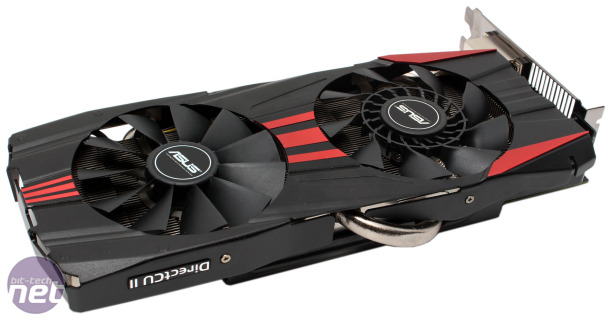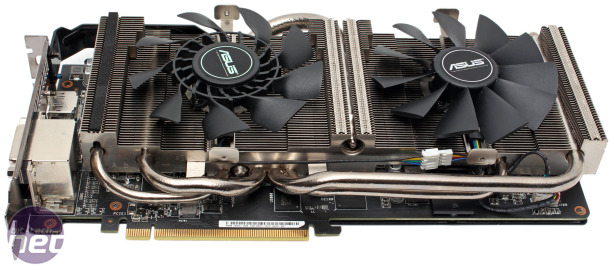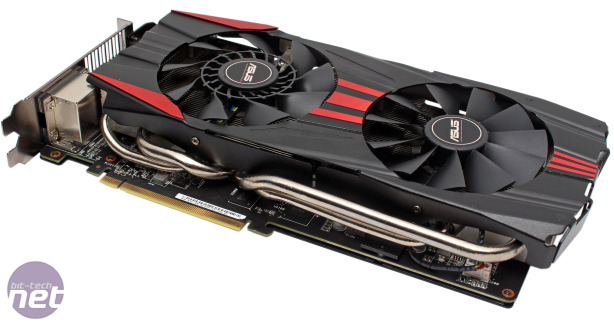Performance Analysis
In both Battlefield 4 and BioShock Infinite, the Asus card is typically only 1 or 2 fps faster than the vanilla R9 290, though it does only have a 6 percent overclock so this is understandable. Over three screens and at 4K, there's essentially zero improvement. Even so, in Battlefield 4 its performance is very close to that of the GTX 780, a card which it manages to overtake at higher resolutions. However, Nvidia's card pulls away in the BioShock tests, most notably at 5,760 x 1,080 where it sustains 32fps compared to this card's 27fps.In Crysis 3 the Asus R9 290 is very strong, and its overclock just allows to overtake the GTX 780 on single screen tests. It's also faster using Eyefinity and at 4K, though no single card is yet powerful enough to remain playable in these tests. Meanwhile, in Skyrim, we only ran the higher resolution tests, which this card has no problem with, and again performance is nearly identical to that of the GTX 780.
Unigine Valley is a benchmark that favours Nvidia hardware, so it's no surprise to see the GTX 780 come out on top, here by 9 percent. The card's overclock does give it a 4 percent lead on the R9 290.
Despite the higher clock speeds, power consumption in our test is actually a little less than the stock R9 290. Asus's claims about the efficiency of its power hardware thus appear to be valid, as the card consumes a little less but does a little more. It does, however, still consume more power than the GTX 780, which is often the faster card.
The temperature results are likely to be of most interest to potential buyers, and here the Asus card excels. During the stress test, the card stayed at its 1,000MHz clock speed without fluctuation, and the fan speed, despite being set to a maximum of 50 percent (Performance mode), plateaued at 42 percent, which was audible but no louder than the rest of the test system's fans. Meanwhile, the temperature remained at a delta T of just 50°C, a whole 22°C less than the stock cooler, which is also far louder. Even though the card still has a target temperature of 95°C, Asus's fan profiles appear to override this and prevent the card from getting this hot. This means there's plenty of leeway to cap fan speeds even more to further reduce noise, provided you're happy with a hotter card. All in all though, the DirectCU II cooler is a fantastic addition to the R9 290 GPU.
The overclocked results are also pleasing. In Battlefield 4 it surpasses the R9 290X thanks to an 11 percent improvement, and even gets very close to the GTX 780 Ti's performance. In Crysis 3, it does even better. Its minimum frame rate goes from 34fps to 40fps, a whopping 18 percent boost that also sees it overtake the GTX Titan Black. Performance in Unigine Valley also increases by 14 percent. The downside is that power rockets upwards – we saw a maximum reading of 490W in our stress test compared to 392W using Asus's default settings. Temperature and noise also increase – we saw a 12°C core temperature increase, while the fans ended up spinning at 50 percent (the most permitted by Asus's Performance mode BIOS setting). Fan noise at 50 percent is louder but still not uncomfortable, and you could run the card a little quieter since the temperature was still 10°C less than the maximum 95°C.
Conclusion
The design of the reference models for the R9 290 series makes for one of the most compelling arguments we've seen to invest in a card with custom cooling, and this particular card is a fine example of engineering a great alternative. From the PCB components to the large, sturdy heatsink and the metal shroud and backplate, this card oozes quality. At its default speeds it's already excellent, and although the modest overclocks mean that performance gains are fairly minimal compared to stock, it is far superior in the noise and heat department and even manages to consume a little less power too. However, it also overclocks well and makes ground on higher end Nvidia cards that are much more expensive. How much of this is down to pot luck and how much is as a result of improved power components and cooling is hard to tell, but it's an improvement over the standard R9 290 nonetheless. At £340, it's priced well against the GTX 780, and the card's quality more than justifies its 13 percent price premium over stock models.
-
Performance36 / 40
-
Features28 / 30
-
Value25 / 30


MSI MPG Velox 100R Chassis Review
October 14 2021 | 15:04












Want to comment? Please log in.